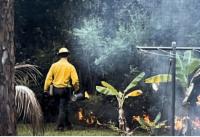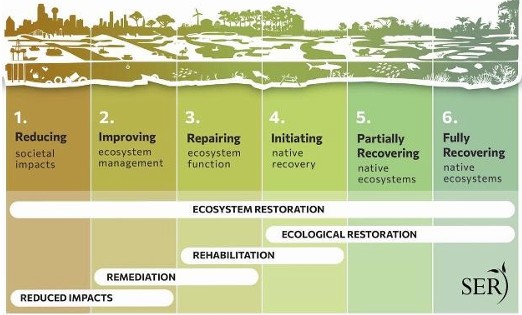
February 2025
I was a freshman, winding down my first year at the University of Colorado in Boulder, when I got a message to call my dad. The subsequent phone call changed my life. A few days earlier the Miami Riots of 1980 caused widespread property damage and among the casualties was our family tomato packing house in Perrine. My dad calmly explained that my parents’ ability to pay for my college education was severely impacted. I needed to find a job that summer and immediately begin to make a much bigger financial contribution to my future.
My dad suggested I call the father of one of the kids in our Boy Scout troop, who worked at Everglades National Park, to see if they had any summer jobs. It turned out they did, and I ended up with a position of Park Aide in the Resources Management division. I worked out of the fire cache on Pine Island and spent most of the summer working on early restoration trials in the Hole-in-the-Donut. I learned all sorts of technical things about pine rocklands, invasive species, prescribed fire, equipment maintenance, and how the National Park Service (NPS) worked. But the most important thing I learned was about the incredible people that make up the NPS, and how dedicated, enthusiastic, and hardworking almost everyone was, but especially the seasonal and entry-level staff.
I had floundered my freshman year, but by the end of that summer I had a new plan, a plan that led me to the creation of IRC, my work with the Society for Ecological Restoration, and to this moment. Although I did not choose to work for the NPS, my experience over three summers had a profound positive impact on my life. For countless others, those first experiences led to a lifetime of public service within NPS, the US Fish and Wildlife Service, the US Forest Service, and many other sister conservation-related agencies. And one thing I know from working in this space for 45 years is that none of these agencies has anywhere near the staff they need to effectively carry out their mandate.
No matter what your position is on the optimal size of the federal government, the mass firings of entry level employees and those making lateral moves between sister conservation agencies is indefensible and short-sighted. To be gleeful about it is cruel and immoral. The damage to the dreams and aspirations of thousands of individuals and their families is bad enough. But the long-term damage to our country and to our natural heritage is immeasurable. New employees, and the enthusiasm, love, and commitment that they bring are the lifeblood of our future. To cast them aside demonstrates the growing disconnect between political ideals and real life. For those of you impacted by the firings, our hearts go out to you. But please don’t give up – we need you now more than ever. By George Gann Reprinted from February 2025 IRC Newsletter

Prescribed burn in the residential area of Pine Island, Everglades National Park, 1981. Field crews, including prescribed burning and invasive species control teams, often comprise a high percentage of seasonal and other entry-level employees. Loss of these jobs will compromise the conservation and restoration of national heritage.

January 2025
The ground below our feet is our turf, our home, our responsibility. But so is the whole planet. In this time of hyper-focus on the United States and the new administration, it is important to remember that all the cumulative actions that we take, and the actions that everyone else takes, will determine the condition and course of the world in the future. Does the United States and the United States government have an oversized role in this? Yes, it does. But so too does the aggregation of our individual actions, and those of people in every corner of the planet.
As we go forth in this year of change, let us remember that we are also agents of change. And what we do individually matters. Conservation is a long game, and restoration is a tool of hope. Ecosystem restoration teaches us to reduce our societal impacts and engage in restorative activities along a continuum of opportunities. Nature is fragile, but with our help it is also resilient. Working together we can reduce harm and allow nature to heal, resulting in better conditions for ourselves, our families, and the planet as a whole. But no matter what happens, we must not stop striving for the future we believe in – a healthy, sane home for both people and nature. By George Gann Reprinted from January 2025 IRC Newsletter

The Restorative Continuum includes a range of activities and interventions that can improve environmental conditions and reverse ecosystem degradation (FAO et al. 2024).

"Is it 1984 or have I lost my mind? The great Jonathan Dickinson controversy."
August 2024
By now, almost all of you will have heard of the bewildering proposal (tabled for now) to destroy globally imperiled Florida scrub at Jonathan Dickinson State Park, chock full of endemic, rare, and threatened plants and animals, including many state-listed species. The reason? To build golf courses and provide other “improvements.”
Aside from the normal whiff of improper political influence and public agencies forgetting their central mandate to protect irreplaceable natural resources, there is something else insidious here that deserves critical attention. Following the extreme negative public response following disclosure of the plan, Governor DeSantis said "As if they were going to try to take away unspoiled land. No, there was almost 1,000 buildings on that base back in the day. There's still some remnants of it.”
What is fundamentally wrong with this statement?
Florida has spent billions of dollars restoring ecosystems and will continue to spend billions in the future. We are in the middle of the United Nations Decade on Ecosystem Restoration. The European Union has just passed the transformational EU Nature Restoration Law. What we know is that most native ecosystems have been degraded in Florida and around the world. Ecological restoration is imperative to stop the extinction crisis, respond to climate change, and deliver essential ecosystem services like clean water and breathable air. But imagine a world in which any ecosystem restored or being restored can be destroyed with the stroke of a pen because it is not ‘unspoiled’. Are the Everglades next?
One of the eight globally agreed principles of ecological restoration is Ecological Restoration Supports Ecosystem Recovery Processes (Gann et al.2019). Nature, assisted by appropriate restoration measures, can be highly effective at recovery – in fact, Nature is way more efficient than we are. Yes, there were many buildings in the past where scrub is now at Jonathan Dickinson. This is not something negative, but rather a testament to the power of Nature and the good works of the Florida Park Service. This recovery is an incredible success story to be celebrated, not something to be diminished to sell off another piece of Florida to the politically connected. By George Gann Reprinted from August 2024 IRC Newsletter




